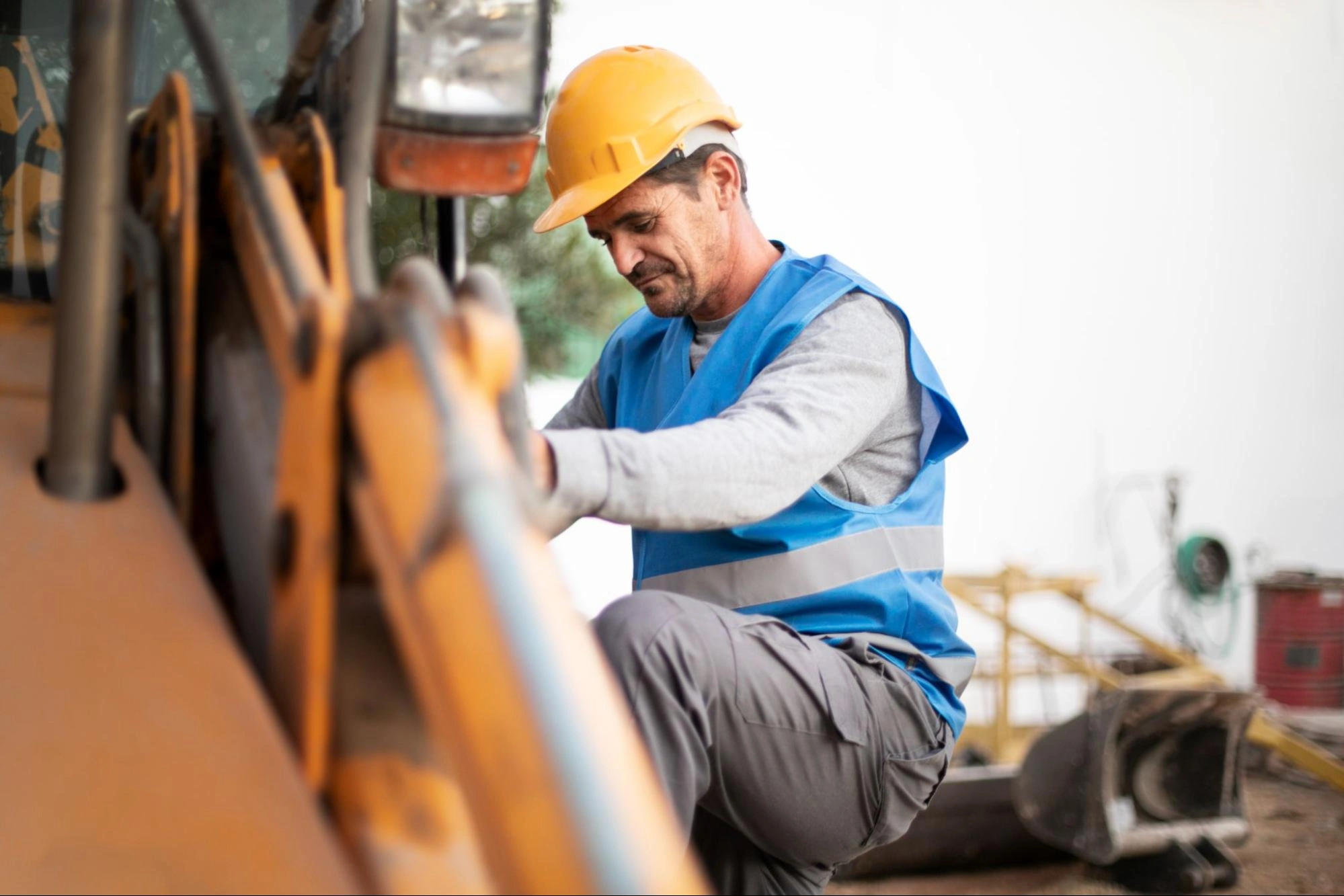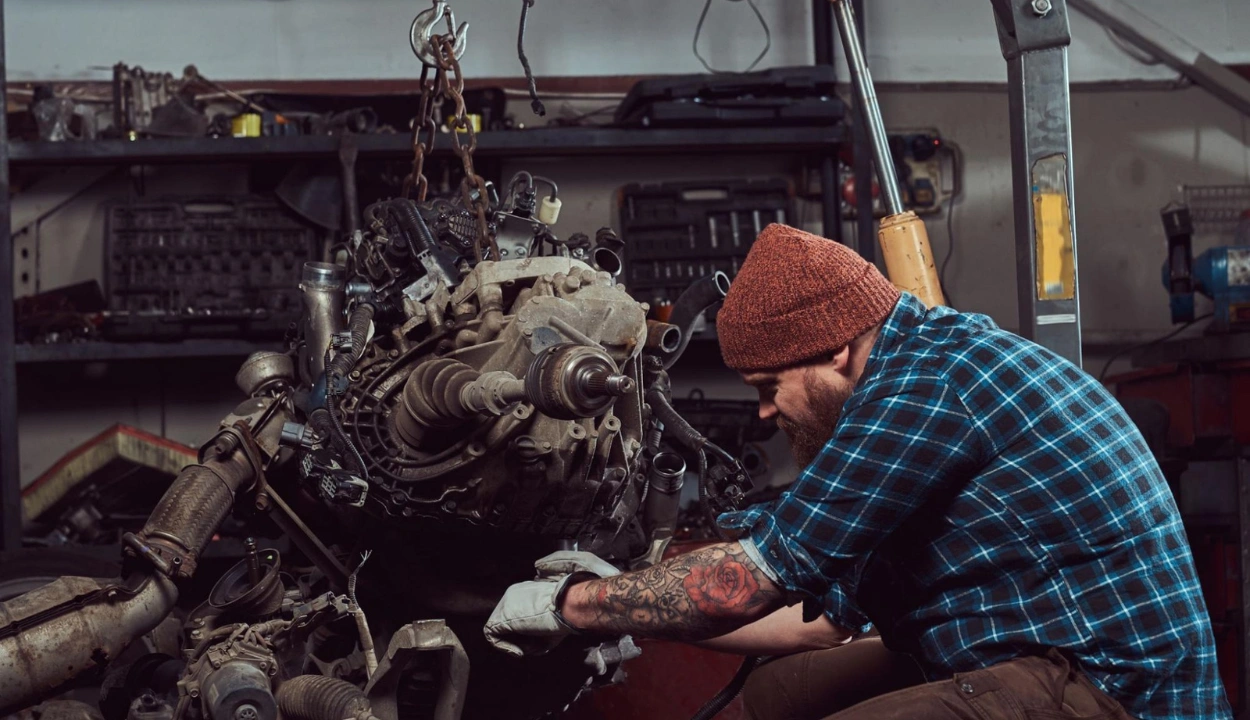Which Recovery Equipment Maintenance Practices Should We Regularly Perform?
Construction projects need to be completed precisely and promptly, so construction and project managers should focus on recovery equipment maintenance practices.
You don’t want your equipment to break mid-operations, which would, to say the least, delay the timeline or result in a severe accident or injury to the workers.
Project managers, dispatchers, and all involved personnel need to understand the critical role of equipment maintenance in ensuring smooth operations and, more importantly, the safety of everyone on-site.
To give you something to work off, let’s check out some recovery equipment maintenance practices you should perform regularly.
What is Recovery Equipment Maintenance?

Recovery equipment maintenance involves taking proactive steps to preserve the functionality, safety, and longevity of equipment used in construction projects.
These equipment maintenance practices involve various tools and machinery for lifting, pulling, and moving heavy loads, such as cranes, hoists, winches, and lifts.
Proper maintenance ensures that this equipment operates reliably, reducing the risk of accidents and optimizing performance.
It is essential to understand that if recovery equipment maintenance practices are not performed, the equipment can break down and become a hazard without the knowledge of the project managers and dispatchers.
As a manager, recovery equipment maintenance practices ensure you can identify any risks or wear-and-tear in the equipment and provide the proper care before these issues become serious safety risks.
How Can Construction Sites Benefit from Recovery Equipment Maintenance?
Proper implementation and following of the recovery equipment management practices can result in significant benefits for the construction company and site.
Let’s check out some of the main benefits that project and construction managers can enjoy with proper implementation of construction equipment maintenance best practices.
Enhancing Site Safety
While heavy construction equipment maintenance is at the top of the list for most project managers, the smaller areas sometimes get overlooked.
If ignored for long, these smaller areas and equipment wear and tear can lead to a bigger breakdown and hazards.
This is why recovery equipment maintenance practices are required to take advantage of regular maintenance.
This can help enhance site safety.
By proactively addressing potential issues and risks, construction sites can minimize the risk of equipment failures and serious accidents, protecting the well-being of workers and the public.
Increasing Equipment Lifespan
Proper construction equipment operation and maintenance can help construction companies extend the lifespan of the recovery equipment.
This can be done by preventing premature wear and tear and damage, helping construction companies maximize their investments in the equipment and avoid the need for frequent replacements.
Through proactive inspection and maintenance, construction companies can easily keep their equipment in working condition for longer.
When the proper care is provided, equipment is likely to perform better and provide you with enhanced performance.
Minimizing Downtime and Delays
Equipment breakdowns due to lack of maintenance can cause costly delays in construction projects.
With a proper construction equipment maintenance plan, construction sites can minimize downtime and stay on schedule, leading to increased productivity and profitability in the future.
Since construction projects operate on strict timelines, even a minor breakdown can bring a project back in weeks.
This is why proper maintenance is required to get the most out of your equipment and keep up with your timelines.
Improved Performance through Increased Productivity
Well-maintained equipment operates more efficiently and effectively.
Regular maintenance ensures recovery equipment performs optimally.
This allows the construction crews to complete tasks more quickly and with higher-quality results.
This translates to heightened productivity, smoother project workflows, and greater success.
Compliance with Industry Rules and Regulations
Construction companies must adhere to their jurisdiction's regulations and safety standards to maintain their equipment properly.
You cannot ignore these regulations, as they can result in heavy fines, penalties, and legal liabilities.
With a properly constructed construction equipment maintenance log and plans, construction companies can easily keep up with the regulations and standards without any additional issues.
Cost Savings and Reputation Building
Preventive maintenance is generally less costly than repairing or replacing equipment that has failed due to neglect.
By investing in regular maintenance, construction sites can avoid costly repairs, replacements, and project delays, ultimately saving money in the long run.
Construction companies prioritizing equipment maintenance are committed to safety, quality, and professionalism.
This can enhance their reputation among clients, subcontractors, and regulatory agencies, increasing trust and opportunities for future projects.
Which Recovery Equipment Maintenance Practices Should be Practiced Regularly?

Regular maintenance of recovery equipment in construction ensures its proper functioning and safety.
Here are some essential maintenance practices:
Regular Visual Inspections of the Equipment
Regularly inspect the equipment visually for any signs of wear, damage, or corrosion.
This includes checking for cracks, fraying, loose bolts, and other visible defects.
With regular visual inspections, project managers can ensure that all the equipment is up to code and can perform the tasks without any issues.
If the visual inspections reveal an issue with the equipment, that equipment needs to be docked and properly worked on to ensure that another issue doesn’t arise.
Keeping the Equipment Clean
Keep the equipment clean from dirt, debris, and other contaminants that could affect its performance.
Use appropriate cleaning methods and materials to prevent damage to sensitive components.
Not only does a piece of unclean equipment give the company a bad look, but it also shows that it doesn’t care about its equipment.
It also shows that there can be issues lying underneath the dirt that might be overlooked.
Clean equipment ensures that cracks or crevices are not overlooked when a project manager inspects it.
Check the Lubrication on all Equipment
Lubricate moving parts according to the manufacturer's recommendations to prevent friction and reduce wear.
Use the correct type and amount of lubricant for each component.
Lubrication is very important for equipment to function correctly.
Without lubrication, the equipment experiences a lot of friction, which can result in the belts getting worn out.
Lubrication is also vital for the gears to function, as without it, the gears can grind against one another, causing equipment failures and needing replacement.
Tension Adjustment to Reduce Friction
Check and adjust the tension of cables, belts, and other tensioned components to ensure they are within the specified limits.
Improper tension can affect the performance and safety of the equipment.
It can also lead to friction within the cables and belts, which can cause wear and tear over time.
These affected cables and belts become more dangerous when used, as they can break and cause serious harm and injuries to the workers.
Conduct a Test Run
Regularly test the equipment according to established procedures to ensure it operates correctly.
This may include load testing, functionality testing, and safety checks.
Although it may seem like many of these tests are required to ensure the equipment performs up to code without any issues.
These tests can also help project and equipment managers identify any issues with the equipment or if they are not functioning correctly.
Replacement of Worn Parts
Replace worn or damaged parts immediately to prevent further damage or failure.
This includes components such as cables, chains, hooks, and straps.
Worn parts are one of the leading causes of workplace accidents and injuries, so they must be checked properly to ensure the safety of your workers.
Wearing parts in equipment can also cause it to slow down over time, leading to delays in the project's progress.
Inspect the Storage Areas
When not in use, store the equipment properly to protect it from environmental factors such as moisture, sunlight, and extreme temperatures.
Use designated storage areas and follow any specific storage requirements the manufacturer provides.
Direct sunlight and environmental factors such as storms and rains can cause the outer body of the equipment to rust and start to fall off.
This can lead to severe issues with the equipment in the long run and cause it to break down more frequently.
Proper Documentation of the Equipment
Keep detailed records of maintenance activities, inspections, repairs, and testing performed on the equipment.
This documentation can help track the equipment's condition and identify recurring issues.
Proper documentation can also help you rely on important information about the equipment to the qualified inspectors when they inspect the project.
Proper Training for Personnel
Project managers must ensure that personnel responsible for maintaining the equipment receive appropriate training on maintenance procedures, safety precautions, and manufacturer recommendations.
If this training and education are not provided to the workers, they are more likely to ignore any significant issues or signs of failure and continue working with the equipment, which can lead to serious accidents and injuries.
Regular Inspections with Qualified Personnel
Schedule regular inspections by qualified personnel to assess the equipment's overall condition and identify any potential issues that require attention.
While you may be a project manager on-site and know your equipment and personnel, you still need the opinions of qualified inspectors to ensure that all your equipment is up to code.
This is why you must regularly schedule inspections with qualified personnel.
This will help you not just comply with the standards and regulations of your jurisdiction but also identify any potential risks proactively.
Tips for Recovery Equipment Maintenance
After everything we have discussed, you understand the importance of recovery equipment practices.
Here are some helpful tips to help you maintain your equipment so you can adequately identify and address any issues with your equipment.
- Regular visual inspections should identify any signs of wear or damage.
- Keep the equipment clean and free from debris to prevent premature wear.
- Lubricate moving parts according to manufacturer recommendations to reduce friction.
- Adjust tension on cables and belts to ensure optimal performance.
- Test the equipment regularly to ensure proper functions.
- Immediately replace worn or damaged parts to prevent further issues.
- Store the equipment in a designated area to protect it from environmental factors.
- Maintain detailed documentation of maintenance activities for accountability and inspections.
- Provide proper training for personnel responsible for equipment maintenance.
- Schedule regular inspections by qualified professionals to assess overall condition.
Wrapping Up
Recovery equipment maintenance practices are not merely just a construction equipment maintenance checklist task.
It is the backbone of the construction industry's safety, efficiency, and success insurance.
You want to keep them in check to ensure your equipment performs its best.
Through proper regular maintenance practices, construction sites can confidently navigate challenges.
These are very helpful in ensuring the seamless progression of projects from start to finish.
FAQs
Which recovery equipment maintenance practice should be practiced regularly?
Visual inspections, lubricant checks, and checks for wear-and-tear are equipment maintenance practices that should be practiced regularly. These factors are most important to ensure that the equipment is performing up to code, so you, as a project manager, should not overlook them.
How do you maintain a recovery machine?
You can maintain a recovery machine by checking the amperage draw of the vacuum pump, checking the pump for leaks, checking the filters, and ensuring that the inlet filters are appropriately protected from outside factors. You must also ensure that your equipment is clean and that, when inspected, no critical issues are covered by dust.
What steps should be taken before using recovery equipment?
Before using recovery equipment, inspect it thoroughly, verify load capacity, and secure the work area. Select appropriate rigging, plan the operation, and communicate effectively among personnel. Perform a test run, monitor conditions, and always prioritize safety.
Can outsourcing maintenance services be beneficial for construction companies?
Outsourcing maintenance services to qualified professionals can provide specialized expertise, streamline operations, and ensure compliance with maintenance standards and regulations. A qualified professional overseeing the maintenance ensures the best care for your equipment.
Transform Your Equipment Management













